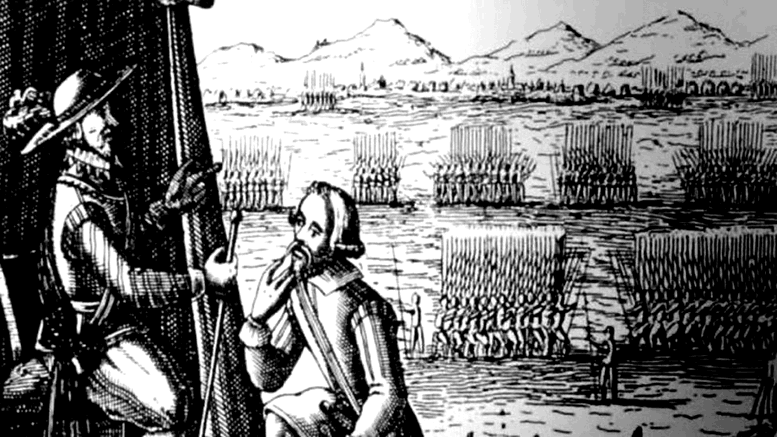
The 9 Years War became an historical turning point for the Irish as it has seen the destruction of old Gaelic rule to be replaced by the new English invaders.
After the destruction of the FitzGerald's of Kildare and their cousins, the Desmond's, the tension in Ireland grew between the New English Reformists and the Gaelic chieftains. The Anglo-Normans became known as the Old English to differentiate them from the new regime.
The New English claimed more and more territory in Ireland and was especially true in Ulster. After the introduction of the Crown of Ireland act in 1541 and the loss of land during the Tudor plantations, the last bastion of the Gaelic ways was to be led by a man who heralded from the Old Gaelic clan, the O’Neill’s. He was called Hugh O’Neill and was Lord of Tyrone.
The New English camp was led by a man called Sir Henry Bagenal whose father has been the chief commissioner of Ulster. Henry Bagenal called for an end to any Gaelic law and was determined that Ulster would abide by only the Queens law. He had not reckoned with the powerful, cunning and charismatic Hugh O’Neill.
The New English from Connacht made headway into the south-west of Ulster until finally in 1594 they took Enniskillen Castle. This put them in a good position in the heart of Hugh O’Neill’s territory.
By 1595 O’Neill, being a great negotiator had made alliances with the Old English and the Gaels. Hugh O’Neill had the upper hand when it came to war, Ulster at this time was badly mapped so the invading forces didn't know the territory, as well as Hugh O’Neill and his army, did.
Hugh O’Neill fought his ground the old Gaelic way, by using defence as opposed to the offence, and he triumphed over Bagenal at the battle of the Yellow Ford and Clontibret. He didn't have enough soldiers to stage an offensive attack so he made a fateful decision to ask England’s mortal enemy, the Spanish, for help.
King Phillip III of Spain was quite happy to assist Hugh O’Neill and fight against the New English. So the Spanish sent a large enough army in 1601 that landed at Kinsale in Co. Cork. This is situated to the far south of O’Neill’s homeland so he marched to meet the Spanish army in Kinsale.
The ensuing battle took place at Kinsale but Hugh O’Neill and his Spanish allies were defeated. By 1603 Hugh O’Neill surrendered to Lord Mountjoy and accepted the Queens rule. In 1607 he fled Ireland in what is known as the Flight of the Earls which brought an end to old Gaelic rule in Ireland.
Last updated: March 2, 2020
In Irish mythology, the Far Darrig emerges as a curious mischievous figure, who is shrouded… Read More
Luke Kelly, an iconic figure in Irish music, left an indelible mark on the folk… Read More
The Wooing of Emer is a captivating tale from Irish mythology that recounts the courtship… Read More
Cú Chulainn stands as one of the most iconic and revered figures in Irish mythology,… Read More